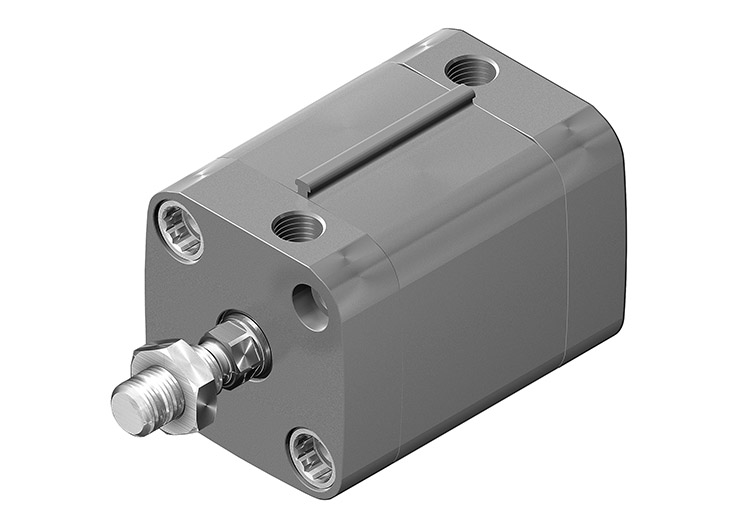 The new Aventics cylinders comply with all relevant European standards for applications in food splash zones. Both the CCL-IS standard cylinder to ISO 15552 and the CCL-IC compact cylinder to ISO 21287 correspond to the basic principles of hygienic design: The cylinder bodies consist of anodized aluminum, while the screws and piston rod are made of stainless steel. The scraper material and the lubricants are also FDA-approved.
The new Aventics cylinders comply with all relevant European standards for applications in food splash zones. Both the CCL-IS standard cylinder to ISO 15552 and the CCL-IC compact cylinder to ISO 21287 correspond to the basic principles of hygienic design: The cylinder bodies consist of anodized aluminum, while the screws and piston rod are made of stainless steel. The scraper material and the lubricants are also FDA-approved.
The CCL-IS standard cylinder is available in eight sizes covering diameters from 25 to 125 mm. The maximum stroke is 2,750 mm. Depending on their requirements, users can choose between elastic and pneumatic cushioning. ST6 series proximity sensors can be installed in just a few steps, without the need for any special tools. The ST6 sensor series includes a wide range of versions with different line lengths and connections. A special feature of the new cylinder series is the option to configure the air connections either on the cover or the base or both. Supply air and exhaust on one side increase flexibility for engineers, especially since the connections can be changed later on. The unused air connections are sealed off with locking screws.
With nine sizes, the CLC-IC compact cylinder covers the widest range available on the market, with diameters from 16 mm to 100 mm. This gives engineers a maximum degree of freedom, since they can exert both lower and higher forces. The maximum stroke of the compact cylinder is 500 mm, and is measured by a proximity sensor from the ST6 family tailored to the application. The CCL-IC can be mounted directly, without any additional fastening elements. With the Aventics Engineering Tools, users can configure Clean Line cylinders online.
Aventics can be found at the 2017 Hannover Messe in hall 23, booth C31.
Link to the Engineering Tools: www.aventics.com/de/engineering-tools
Filed Under: Cylinders & Actuators, Pneumatic Tips